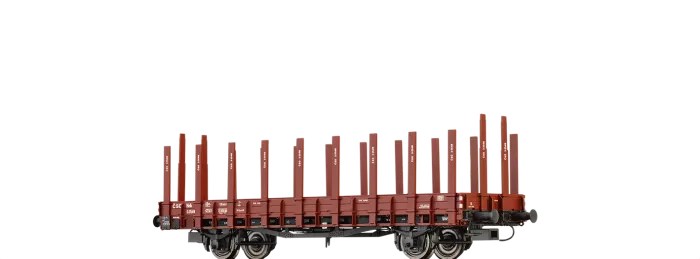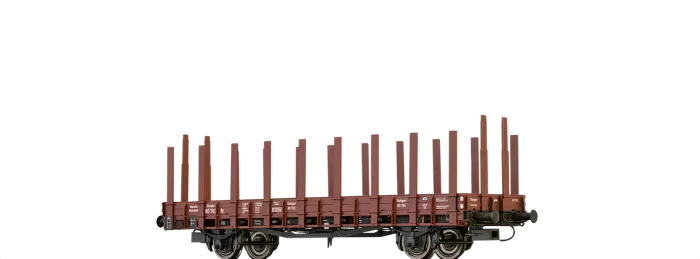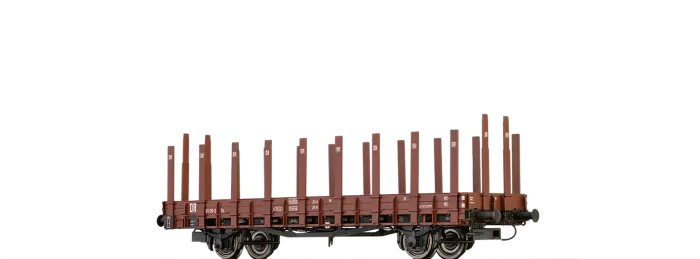
Stake Car Rm ÖBB
Road no.: 432 975
Model details
- Axle holders made of embossed sheet metal
- Individually mounted wheelchocks
- Fine replica of the wheel bearing
- Individually mounted brake switch
- NEM-standard short-coupling
- True to original car bottom
- Wheelsets with inside contours
Downloads
Info about the original
The stake cars were also redesigned in the mid 1920s in accordance with the principles of interchangeability. It was decided to use the chassis of the G1 car so that the car was longer than its association type predecessor and had two more stakes. However, the larger loading surface did not affect the payload; this remained unchanged at 15 tonnes. As the majority of freight transported generally had a high volume and a low weight, this had no further negative effect. As with the freight carriage, the majority of the stake cars could be adapted to the Russian wide gauge in accordance with the spirit of the age and identified by the white buffer sleeves and the sub-class mark "r". The floor also underwent several changes. Whereas the first 180 carriages which were built from 1926 had a floor made of 56 mm thick planks, from 1934 onwards two cross-wise layers of 32 mm each were used. At the beginning of the 1940s, all carriages were then equipped with 72 mm thick boards - the main freight was now lorries and tracked vehicles. In total, 1643 cars were delivered to DRG, so that the Rr Stuttgart played a rather modest role in the overall stock of stake cars. It shared this lot with almost all interchangeable cars, which usually did not even begin to approach the numbers of their predecessors. In addition to road vehicles, they were mainly used for transporting tree trunks, sawn timber, metal sheets, profiles and other large volume goods which were not sensitive to moisture.








